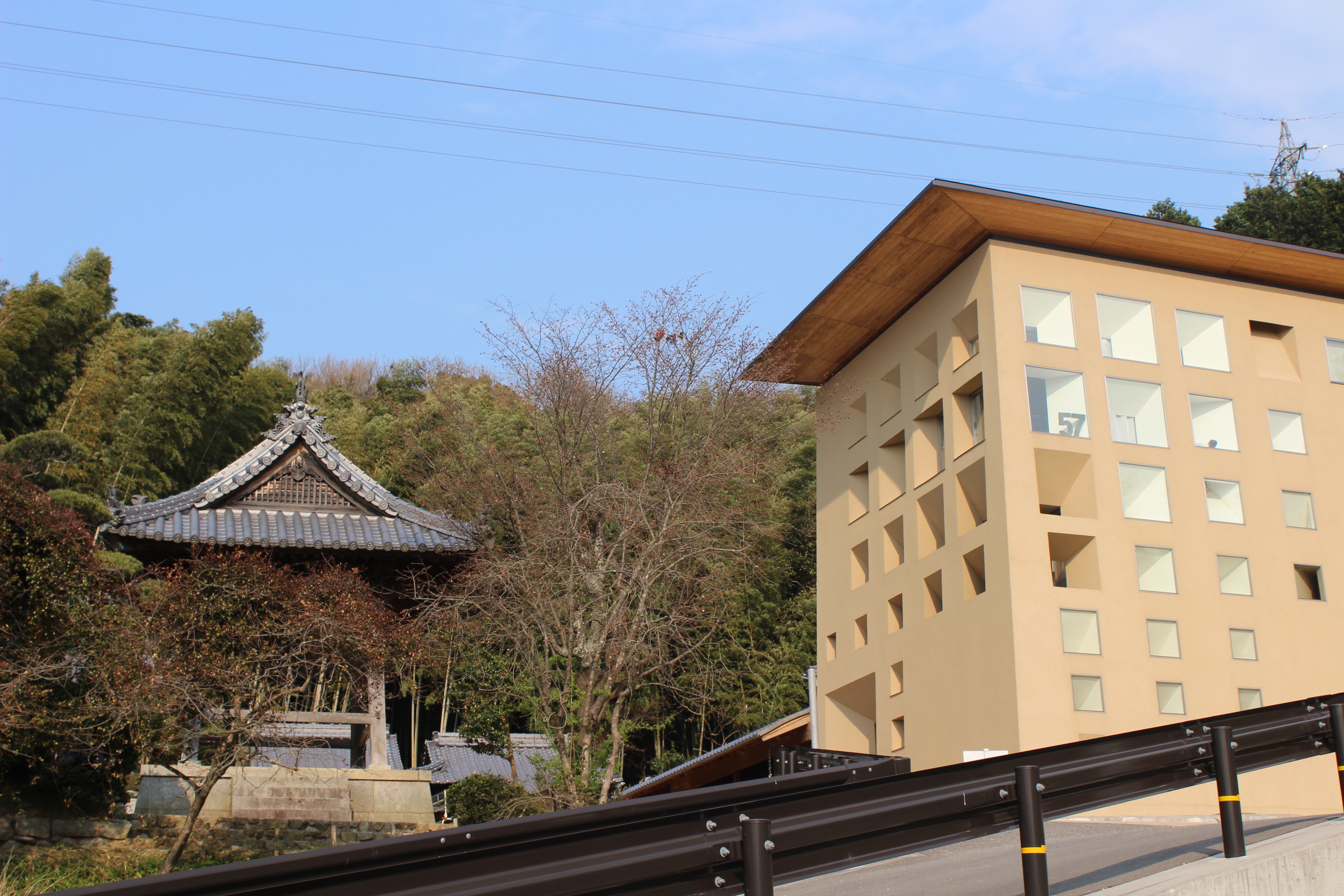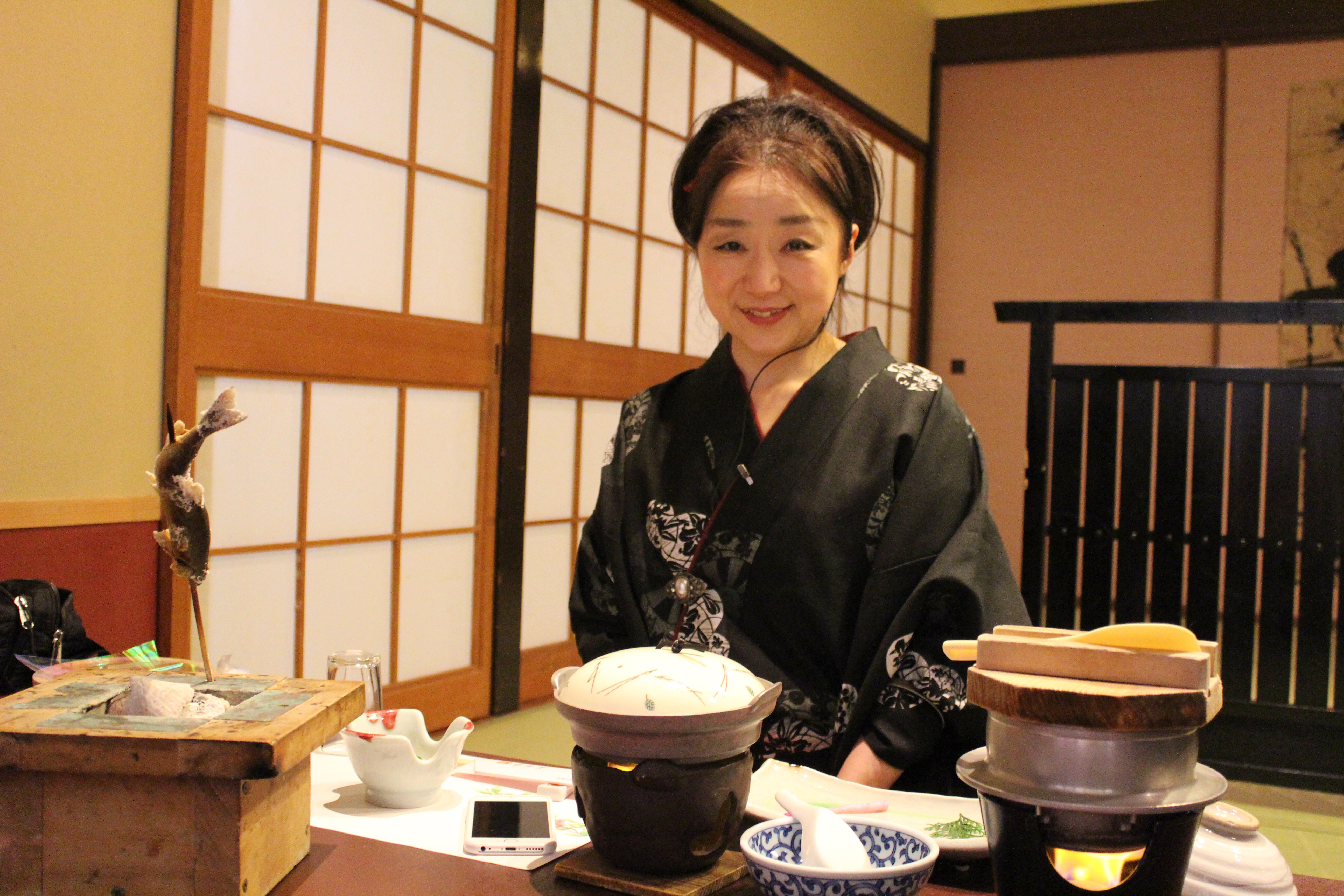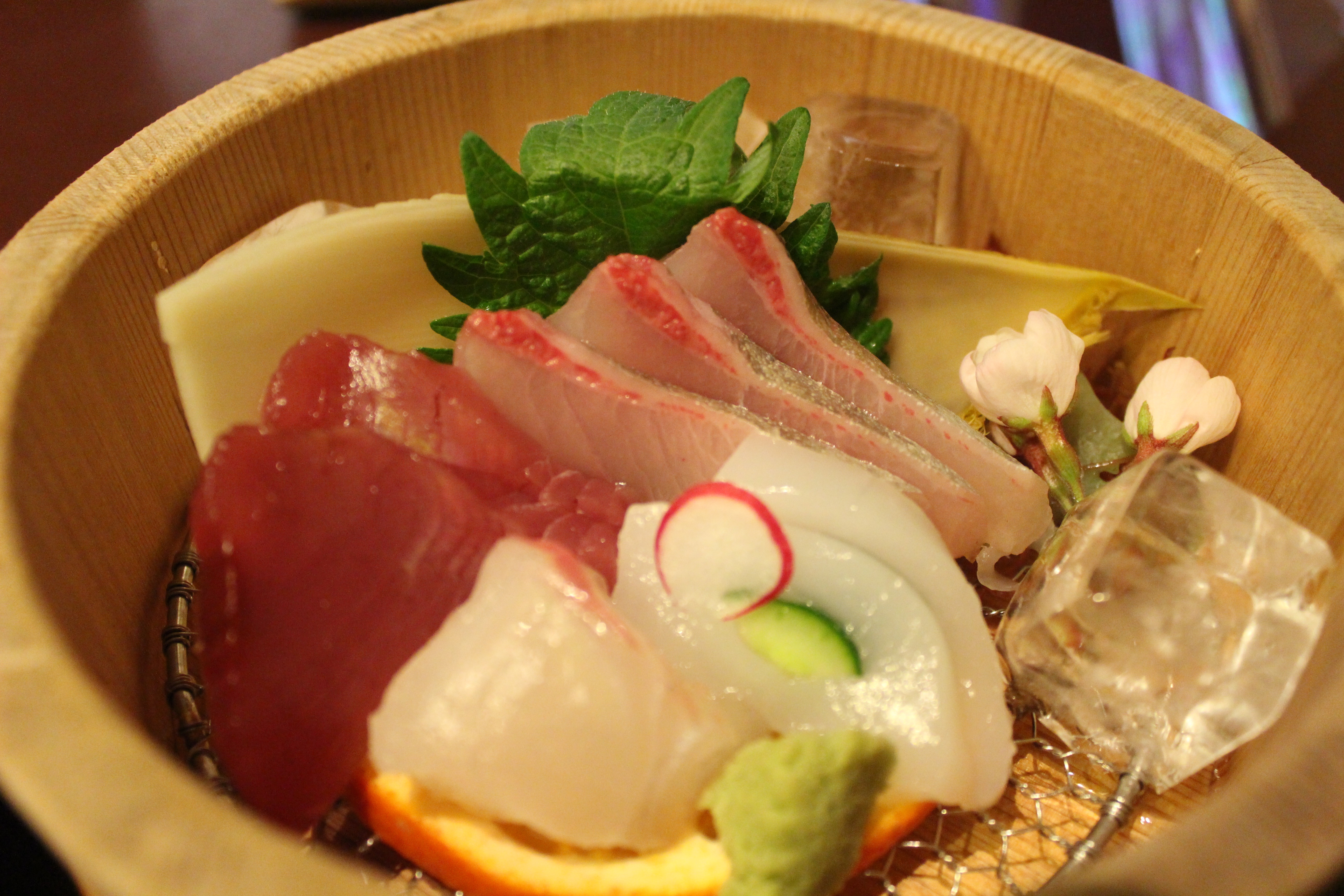Nankōbō and the lost Kongōzue (temples 54- 58)
The day I visited Nankōbō I was, like most of the Ohenros, a pilgrim coming in a car.
It was the car of my Japanese friends who had a meeting in Matsuyama city at the
same time I was there. It was such a coincidence! We were able to spend a day
together.
After visiting Enmeiji (54), we drove to Nankōbō, a city temple were buses and cars
had to park on the temple grounds because of a lack of alternative parking spaces.
It was busy and restless there. Like always, I had put my Kongō-zue, Diamond-
staff into the stone container in front of the Daishidō in order to do the ritual. Many
other Kongōzue from bus pilgrims where placed there too. When I wanted to get my
staff again, it was gone. Another Ohenro took my Kongōzue by mistake! I was very
sad. It made me aware how attached I had become to my staff.
The Hondō of Nankōbō, temple 55
The new Kongōzue and I in front of the Daishidō
One of four guardians (Shitennō) called Zōjōten,
the guardian of the south gate of Nankōbō
Usually, the temple gates are guarded by Niō – two strong guardians called A-gyō,
A-form, with an open mouth and Un-gyō with a closed mouth. The name of the
temple Nankōbō is unusual, as most of the temples end in “ji”, which means temple.
The reason is that it started as one of twentyfour detached bōs (staying place/temple:
shukubō, the formal name: Bekkusan Kōmyōji Kongōin Nankobō) of Ōyamagami
Jinja of Ōmishima. Most temples were built in the traditional way. However
sometimes, modern buildings coexisted with the old style, like in Eifukuji.
Eifukuji, temple 57 with the modern building
Originally, we planned to only visit temple 54 and 55 with the car. I wanted to stay
overnight in Imabari City and continue to walk from there. However, due to an
event, every hotel and Ryokan was booked. Yuko and Shigeo helped me to find a
Ryokan called Mikado in Nibukawa Onsen, 10 km off the pilgrim’s trail. It was a
family run traditional Onsen Ryokan with great bath, good food and very nice people.
Basket with a cotton Yukata and belt, towels and a bag
with toothbrush, toothpaste, brush and other little things
Flower arrangement in the dining room of Mikado
Japanese dining is very sophisticated.
Every Japanese meal includes dishes of five tastes, five colors and fives ways. The five
tastes are sweet, sour, salty, spicy and bitter, sometimes spicy is replaced by umami,
translated as pleasant savory taste. The five colors are red, white, black, yellow and
green and the five ways include boil/simmer, roast/broil/grill, raw, fry and steam.
The arrangement is always beautiful and artistic. Eating Japanese food is a feast for
the senses!
Before the meal is served, every restaurant provides the oshibori, a warm, wet towel
to clean the hands. During the summer months, it is usually cold. One bows in
gassho (folded hands) and says “Itadakimasu” (I gratefully receive, lit. I put it on my
head) before starting to eat. It is polite to eat everything served. At the end of the
meal, one bows again and says “Gochisōsama deshita” (thank you for the feast, lit.
thank you for your having running around – for getting, cooking, serving, etc.).
It was a real feast in Mikado to eat dinner there.
One of the owners served the food. The dish on the right side is rice with a rice
spatula on the top. In the middle, the dish cooked at the table is called nabemono
(lit. things of pan or earthen-ware). The grilled fish on the left was served on a stick
and looked like it was still floating in the water. Sashimi or raw fish is in between
the fish and nabemono.
A very warm good by at the Mikado










